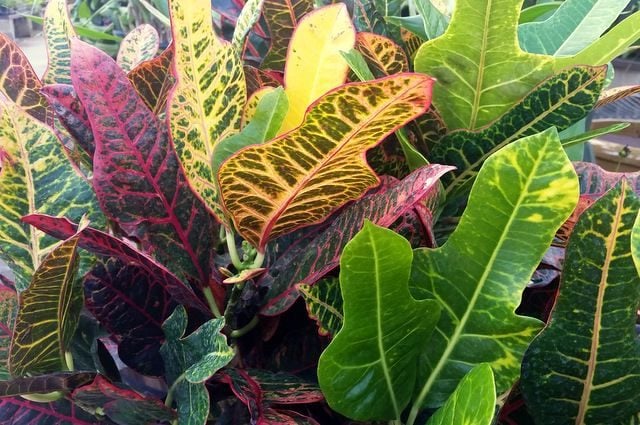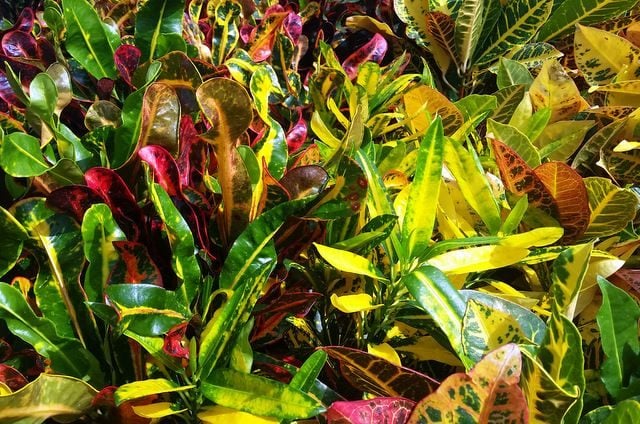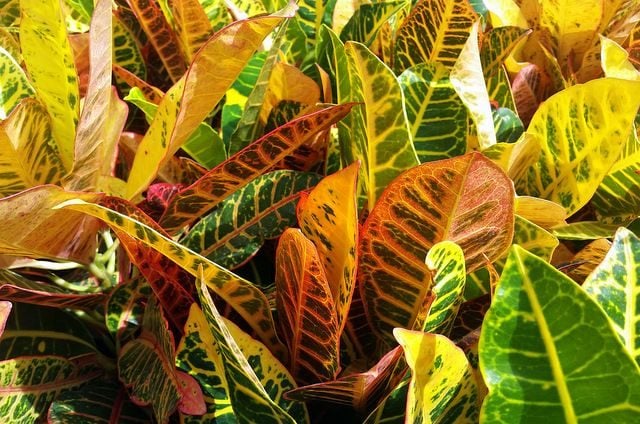Grow Croton Plants for Year-Round Fall Foliage
Updated: Sep. 29, 2021
If you love the reds, yellows, and oranges of fall foliage, you'll want to grow croton plants to enjoy those vivid hues all year long.
Our editors and experts handpick every product we feature. We may earn a commission from your purchases.

Many people find fall to be the most beautiful time of the year. As the days grow shorter and temperatures drop, trees respond with a bright show of color. Red and yellow, brown and orange and even purple—these are the hues of autumn. If you love fall foliage displays, you might find croton plants right up your alley. Here’s what you need to know to grow crotons at home.

Croton Facts
Though they vary widely in leaf color and shape, nearly all croton varieties sold today are Codiaeum variegatum, native to Indonesia, Australia, and the Western Pacific. The plants have been carefully bred to create a variety of cultivars, with leaf shapes ranging from long and thin to wide and pointed, and some even have multiple lobes. They all have the same color palette in common, though, and are very popular as houseplants all around the world. Those living in frost-free zones can grow crotons outdoors, where they grow as shrubs and are frequently used in hedges. Elsewhere, grow crotons indoors as houseplants.
It’s important to note that crotons contain latex sap, which can cause allergic reactions for some. Keep children and pets away from crotons, as all parts of the plant can be poisonous if ingested.
Off limits! These 8 houseplants aren’t safe for dogs.

How to Grow Croton Plants
- Light Outdoors, crotons like full sun or part shade. Indoors, give them all the bright light you can, even direct sun. Crotons that don’t get enough light will have green leaves rather than brilliant colors. Psst—these are the top 10 best houseplants for low light.
- Water When planting crotons outside, choose well-drained soil and water well while the plant establishes itself. Once the plant is settled in, it shouldn’t need any supplemental watering unless your area is extremely hot and dry. For indoor croton plants, water once the top inch or two of topsoil is dry. Be sure to use potting soil that drains well. Crotons like humidity, so mist occasionally in drier homes.
- Temperature Crotons can’t take freezing temperatures, and may even suffer when temps drop below 40 degrees. For indoor plants, this shouldn’t be a problem. Outdoor plants should be covered if frost is expected. Here’s how to overwinter non-hardy bulbs and tropical plants.
- Problems Crotons are notoriously picky about abrupt changes to their environment. This often results in leaf drop when a new plant is brought home from the nursery. Don’t panic if yours loses all its leaves soon after you get it. Just give it the care it needs and the leaves will grow back relatively quickly. Why does my plant have brown tips on the leaves?
Croton Light Requirements
“I bought a croton several years ago because I liked the different colors in the leaves. Now my plant is doing well, but it generates big green leaves. Why aren’t they colorful?” asks Larry Smith of Hudson, New Hampshire.
Crotons display the best leaf color when grown outdoors or in a sunny window indoors, says garden expert Melinda Myers. All plants contain three pigments—chlorophyll (green), carotinoids (yellow and yellow-oranges) and anthocyanins (red and purple). The carotinoids and anthocyanins mask some or all of the green chlorophyll in plants with colorful leaves. In low light conditions the green chlorophyll pigment becomes more pronounced than the other two pigments. Move your plant to a sunnier window and you should see an improvement in the leaf color.
Where to Buy Croton Plants

You can buy croton plants online from Breck’s or look at your local garden center.
Check out the best shrubs with fiery fall foliage.
